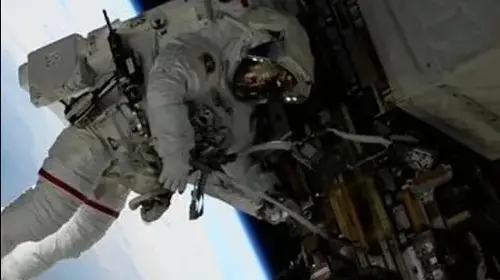
While science fiction has terrified us with alien microbes infecting astronauts and threatening humanity, a new study published in Cell reveals a stunning twist: the real danger lurking aboard the International Space Station isn’t an invasion of unknown alien pathogens, it’s the absence of microbial allies we evolved with on Earth that might be weakening astronaut immune systems.
For 20 years, astronauts have orbited Earth in what is essentially a sealed bubble- a meticulously maintained environment where microbial diversity is drastically reduced. University of California San Diego researchers, led by microbiologist Rob Knight, have mapped this hidden world by analysing 803 surface samples from throughout the station. Their findings reveal an ecosystem dominated by human-associated bacteria, missing the environmental diversity that is probably needed for astronaut health.
What they discovered shatters our preconceptions about space contamination. Rather than being colonised by mysterious cosmic microbes, the ISS is home to a limited selection of human-associated bacteria, primarily Staphylococcus from our skin, while beneficial environmental microbes from soil and water are strikingly absent. When researchers positioned the ISS along what they call an “anthropocentric gradient” of environments, the space station landed at the extreme end of microbial diversity, most similar to a COVID-19 isolation dormitory on Earth.
Many microbes, it turns out, are good for us. And this makes sense. Humans have co-evolved with a wide variety of microbes from birth, with early exposure to soil, animals, and even household dust helping to establish balanced immune responses.
Also Read: How fish gill genes helped create your ears
In modern cities, reduced exposure to environmental microbes has been linked to increased rates of asthma, allergies, and autoimmune diseases. The ISS takes microbial isolation to an extreme, reinforcing what we already know about the risks of overly sanitized environments.
We know from the ground that children raised in rural environments tend to develop more resilient immune systems. Conversely, astronauts in the ISS’s microbe-poor environment experience immune dysfunction, persistent skin rashes, and the reactivation of dormant viruses like Epstein-Barr and herpes simplex, both of which the study detected on ISS surfaces. While this doesn’t prove the ISS microbiome directly causes these immune issues, it highlights the importance of microbial exposure in regulating human health.
The ISS isn’t completely germ-free, but its microbial makeup is largely shaped by astronaut activities and module functions. Each module tells its own microbial story. The kitchen harbors food-related compounds, molecules from pepper, citrus, and caffeine. Meanwhile, the bathroom and exercise areas form microbial and chemical “hotspots” with their own unique signatures. Near the treadmill, researchers detected PFAS, or forever chemicals, commonly used in water-repellent fabrics, at levels exceeding those typically found in indoor environments on Earth.
Disinfectant residues persisted throughout the station, even though astronauts were instructed to stop cleaning four days before sample collection. The study suggests that harsh disinfection practices may be altering the microbial balance on the ISS, providing optimal conditions for
bacteria that tolerate extreme conditions while limiting diverse microbes that might help keep astronauts healthy.
Some ISS bacterial strains show genetic differences from their Earth counterparts, possiblly because they’ve now adapted to the unique conditions of the space station. The study also found genes associated resistance to metals.
We might need to rethink how we approach space habitation. Rather than obsessing over sterility, future missions might need to intentionally cultivate beneficial microbes. Spacecraft designers could create environments that better mimic Earth’s natural microbial diversity, introducing probiotic cleaning systems instead of harsh disinfectants. Just as microbial diversity is essential to human health on Earth, it is likely just as important in space.
As we look toward extended missions to Mars, we face a dawning truth: our microbial companions may be as essential to spacefaring as oxygen and water. The next frontier of space exploration won’t just need better rockets and habitats, it will require designing living ecosystems that support human health in the most extreme environment ever encountered.
If we eventually do establish colonies beyond Earth, we’ll need not just our technology, but the invisible web of life that evolved with us over millions of years on our home planet. In our quest to escape Earth’s gravity, we can’t leave behind the microscopic companions that help keep us healthy on our home planet.
Anirban Mahapatra is a scientist and author, most recently of the popular science book, When the Drugs Don’t Work: The Hidden Pandemic That Could End Medicine. The views expressed are personal.
